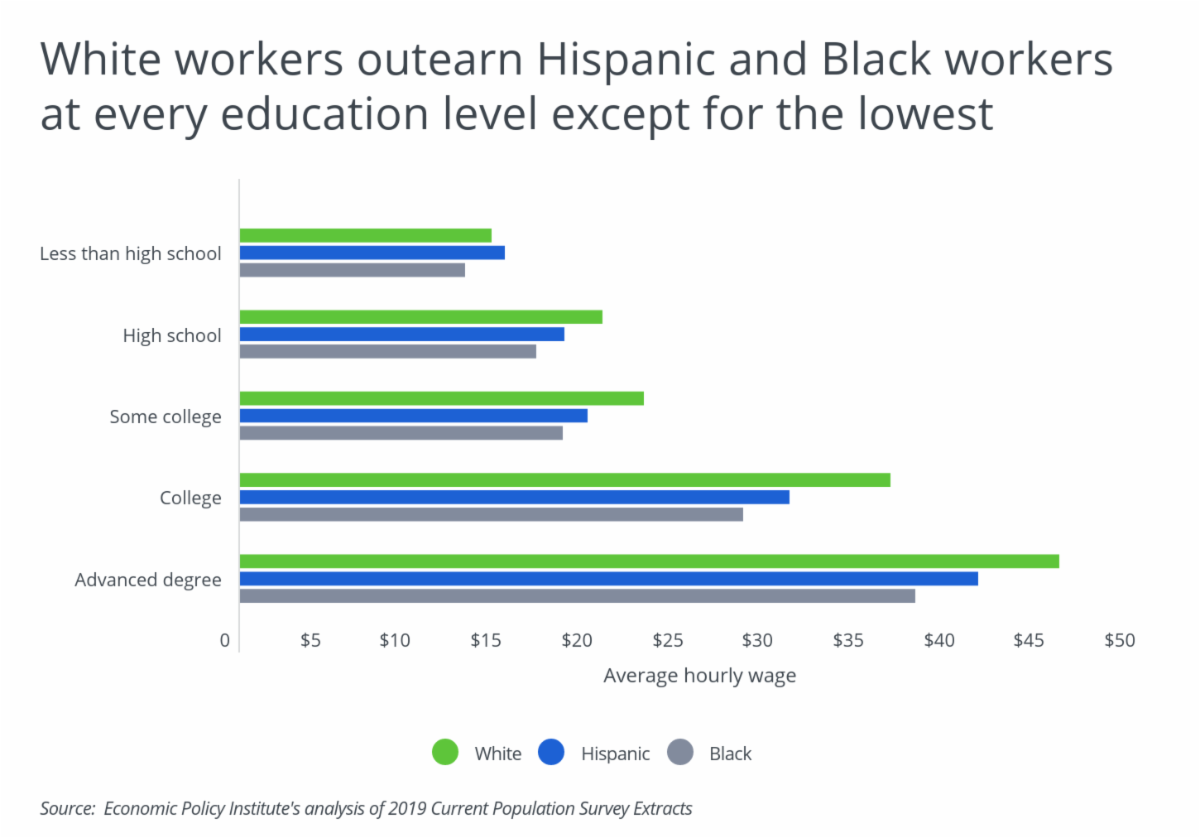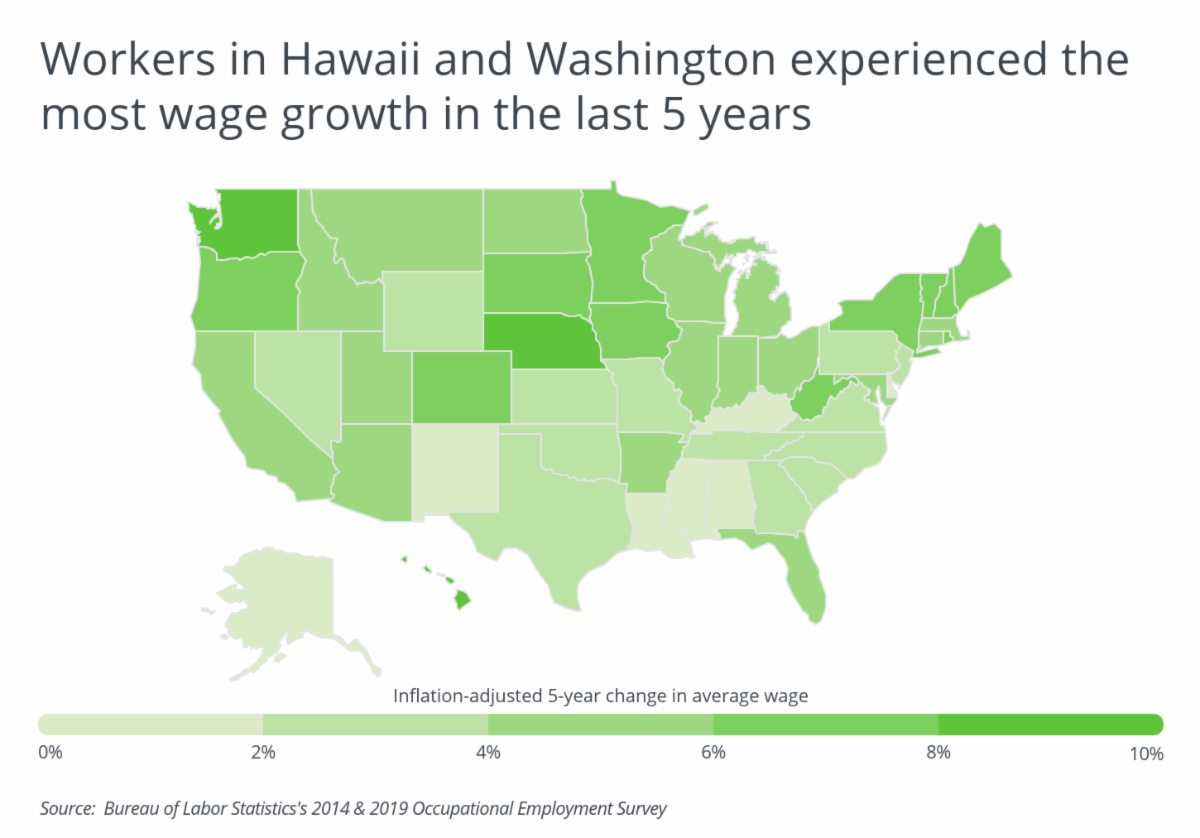Over a 5-Year Span, Georgia Wages Have Grown 2.8%
Tuesday, February 23rd, 2021
Slow wage growth and increasing wage inequality have characterized the U.S. labor market for the past several decades. The COVID-19 pandemic has disproportionately impacted lower-wage workers, only serving to exacerbate these problems. Now, a year into the pandemic, millions of workers remain unemployed and many businesses still face restrictions.
Over the past five years, average annual wages increased by 4.8%, after adjusting for inflation. However, much of the increase in average wages can be attributed to growing wages among the highest earners. According to an analysis of Current Population Survey data by the Economic Policy Institute (EPI), real median hourly wages grew by 15% from 1979 to 2019. In comparison, workers in the 95th percentile saw their wages grow by 63%, while workers in the 10th percentile only experienced wage growth of about 3%.

Alongside more pronounced wage inequality over the years, racial and ethnic pay disparities have continued to persist. EPI’s analysis of 2019 Current Population Surveydata shows that White and Hispanic workers outearn Black workers at every level of education. Whites also outearn Hispanics at every education level except those with less than a high school degree. Racial wage gaps are most significant among college degree holders, where White workers earn 29% more than Black and 18% more than Hisapanic workers.

While real wages increased by nearly 5% nationally over the past five years, the average workers in some parts of the country experienced little to no gains. At a regional level, the South and Southeast saw lower average wage growth, while certain Northern states experienced meaningful gains. Hawaii and Washington had the fastest growing wages in the country, with average annual wages increasing by 9.9 and 9.2%, respectively. Conversely, Alaska, Delaware, New Mexico, and Mississippi experienced no statistically significant change in real wages.

To determine the states with the fastest growing wages, researchers at HireAHelper analyzed data from the Bureau of Labor Statistics’s 2019 and 2014 Occupational Employment Statistics data (OES). The researchers ranked states according to the inflation-adjusted five-year change in average wages across all workers. Researchers also calculated the occupation with the largest inflation-adjusted wage increase from 2014 to 2019 in each location.
The analysis found that accounting for inflation, the 2014 average annual wage in Georgia was $48,287. By 2019, that figure had increased to $49,620, representing a 2.8% increase over a span of just five years. Here is a summary of the data for Georgia:
-
Inflation-adjusted 5-year change in average wage: 2.8%
-
2019 average annual wage: $49,620
-
2014 average annual wage (2019 dollars): $48,287
-
2014 average annual wage (2014 dollars): $44,670
-
Job with the largest wage increase: Producers and Directors (24.4%)
For reference, here are the statistics for the entire United States:
-
Inflation-adjusted 5-year change in average wage: 4.8%
-
2019 average annual wage: $53,490
-
2014 average annual wage (2019 dollars): $51,054
-
2014 average annual wage (2014 dollars): $47,230
-
Job with the largest wage increase: Farmworkers and Laborers, Crop, Nursery, and Greenhouse (23.4%)
For more information, a detailed methodology, and complete results, you can find the original report on HireAHelper’s website: https://www.hireahelper.com/


